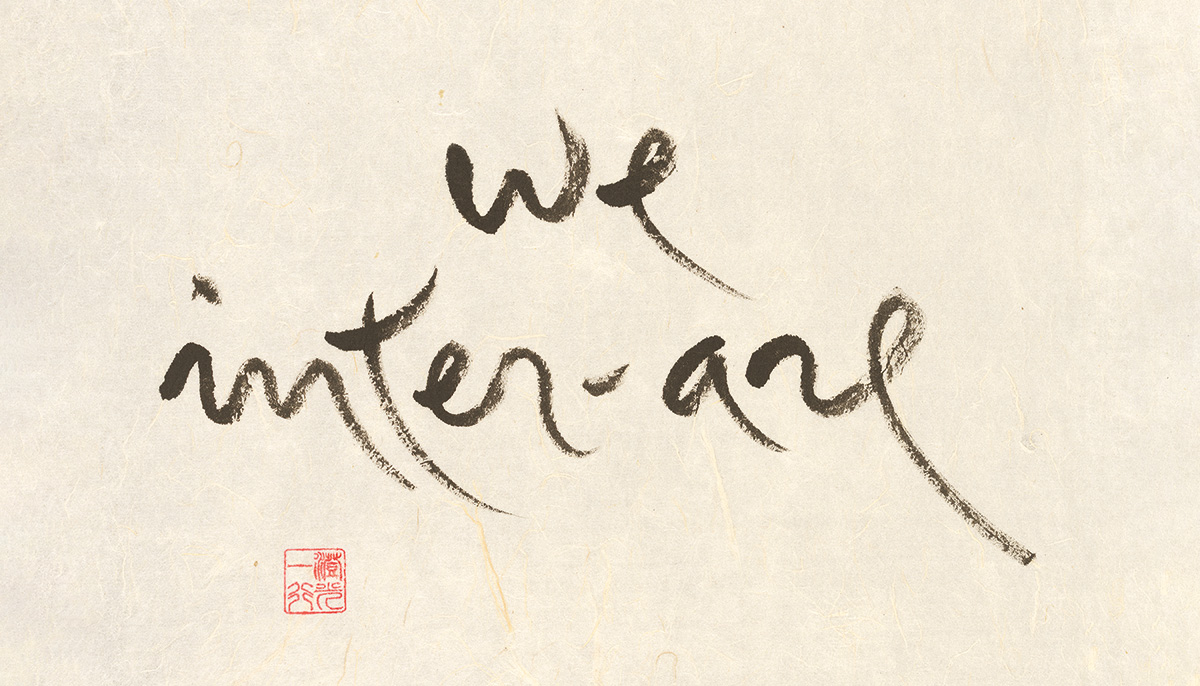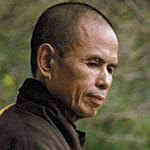We come to the practice of meditation seeking relief from our suffering, and meditation can teach us how to transform our suffering and obtain basic relief. But the deepest kind of relief is the realization of nirvana. There are two dimensions to life, and we should be able to touch both. One is like a wave, and we call it the historical dimension. The other is like the water, and we call it the ultimate dimension, or nirvana. We usually touch just the wave, but when we discover how to touch the water, we receive the highest fruit that meditation can offer.
In the historical dimension, we have birth certificates and death certificates. The day your mother passes away, you suffer. If someone sits close to you and shows her concern, you feel some relief. You have her friendship, her support, her warm hand to hold. This is the world of waves. It is characterized by birth and death, ups and downs, being and nonbeing. A wave has a beginning and an end, but we cannot ascribe these characteristics to water. In the world of water, there is no birth or death, no being or nonbeing, no beginning or end. When we touch the water, we touch reality in its ultimate dimension and are liberated from all of these concepts.
To be born means from nothing you become something.
The second-century philosopher Nagarjuna asked, “Before something was born, did it exist or not?” Before the egg was born from a chicken, was it existent or nonexistent? If it were already there, how could it have been born? Since a baby is also already present in the womb of her mother, how can we say she is not yet born? Nagarjuna says that something already present cannot be born. To be born means from nothing you become something; from no one you become someone. But nothing can be born from nothing. A flower is born from soil, minerals, seeds, sunshine, rain, and many other things. Meditation reveals to us the no-birth of all things. Life is a continuation. Instead of singing “Happy Birthday,” we can sing “Happy Continuation.” Even the day of our mother’s death is a day of continuation; she continues in many other forms.
A friend of mine has been taking care of her ninety-three-year-old mother. The doctors say that her mother will die any day. For more than a year, my friend has been teaching her mother meditation exercises that have been very helpful. She began by watering the seeds of happiness in her mother, and now her mother becomes very alive every time my friend comes around. Recently she told her mother, “This body is not exactly yours. Your body is much larger. You have nine children, dozens of grandchildren, and also great-grandchildren. We are all continuations of you, and we are very happy and healthy. You are quite alive in us.”
Her mother was able to see that, and she smiled. My friend continued, “When you were young, you were able to teach many people how to cook and do many other things. You made people happy. Now we are doing the same thing; we are continuing the work you have begun. When you were young, you wrote poetry and sang, and now many of us write poems and sing beautifully. You are continuing in us. You are many beings at the same time.” This is a meditation on nonself. It helps her mother see that her body is just a small part of her true self. She understands that when her body departs, she will continue in many other forms.
Who can say that your mother has passed away? You cannot describe her as being or nonbeing, alive or dead, because these notions belong to the historical dimension. When you touch your mother in the ultimate dimension, you see that she is still with you. The same is true of a flower. A flower may pretend to be born, but it has always been there in other forms. Later it may pretend to die, but we should not be fooled. She is just playing a game of hide-and-seek. She reveals herself to us and then hides herself away. If we are attentive, we can touch her anytime we want.
One day as I was about to step on a dry leaf, I saw the leaf in the ultimate dimension. I saw that it was not really dead, but it was merging with the moist soil and preparing to appear on the tree the following spring in another form. I smiled at the leaf and said, “You are pretending.”
Everything is pretending to be born and pretending to die. The Buddha said, “When conditions are sufficient, the body reveals itself, and we say the body is. When conditions are not sufficient, the body cannot be perceived by us, and we say the body is not.” The day of our so-called death is a day of our continuation in many other forms. If you know how to touch your mother in the ultimate dimension, she will always be there with you. If you touch your hand, your face, or your hair, and look very deeply, you can see that she is there in you, smiling. This is a deep practice, and it is also the deepest kind of relief.
Nirvana means extinction, the extinction of all notions and concepts, including the concepts of birth, death, being, nonbeing, coming, and going. Nirvana is the ultimate dimension of life, a state of coolness, peace, and joy. It is not a state to be attained after you die. You can touch nirvana right now by breathing, walking, and drinking your tea in mindfulness. You have been “nirvanized” since the very nonbeginning. Everything and everyone is dwelling in nirvana.
Nikos Kazantzakis tells the story of St. Francis of Assisi standing in front of an almond tree in midwinter. St. Francis asked the tree to tell him about God, and suddenly the tree began to blossom. In just a few seconds, the almond tree was covered with beautiful flowers. When I read this story, I was very impressed. I saw that St. Francis stood on the side of the ultimate dimension. It was winter; there were no leaves, flowers, or fruits, but he saw the flowers.
We may feel that we are incapable of touching the ultimate dimension, but that is not correct. We have done so already. The problem is how to do it more deeply and more frequently. The phrase, “Think globally,” for example, is in the direction of touching the ultimate dimension. When we see things globally, we have more wisdom and we feel much better. We are not caught by small situations. When we see globally, we avoid many mistakes, and we have a more profound view of happiness and life.
There are times when we feel angry at someone, and we think that if we do not confront him, our dignity will be lost. Perhaps that person challenged our authority, and we feel frustrated that we did not respond right away. We may go to bed unhappy and barely manage to get a good night’s sleep, but the next day, we feel completely different. We laugh and smile, and see the situation entirely differently. Suddenly, what happened yesterday is not important. Only one night separates us from the event, and already things are quite different. This is to think globally, in terms of time.
When we dwell in the historical dimension, we are tossed about by many waves. Perhaps we have a difficult time at work. Or we have to wait too long in line at the supermarket. Or we have a bad telephone connection with our friend. We feel tired, a little depressed, or angry. This is because we are caught in the present situation. But if we close our eyes and visualize the world one hundred years from now, we will see that these problems are not important. Embracing just one hundred years, we see things very differently. Imagine how drastic a change is brought about by touching the ultimate dimension!
When you touch one moment with deep awareness, you touch all moments. According to the Avatamsaka Sutra, if you live one moment deeply, that moment contains all the past and all the future in it. “The one contains the all.” Touching the present moment does not mean getting rid of the past or the future. As you touch the present moment, you realize that the present is made of the past and is creating the future. Touching the present, you touch the past and the future at the same time. You touch globally the infinity of time, the ultimate dimension of reality. When you drink a cup of tea very deeply, you touch the present moment and you touch the whole of time. It is what St. Francis did when he touched the almond tree so profoundly that he could see it flowering even in the middle of winter. He transcended time.
Meditation is to live each moment of life deeply. Through meditation, we see that waves are made only of water, that the historical and the ultimate dimensions are one. Even while living in the world of waves, we touch the water, knowing that a wave is nothing but water. We suffer if we touch only the waves. But if we learn how to stay in touch with the water, we feel a great relief. Touching nirvana frees us from many worries. Things that upset us in the past are not that important, even one day later—imagine when we are able to touch infinite time and space.
We come to the practice seeking relief in the historical dimension. We calm our body and mind, and establish our stillness, our freshness, and our solidity. We practice loving-kindness, concentration, and transforming our anger, and we feel some relief. But when we touch the ultimate dimension of reality, we get the deepest kind of relief. Each of us has the capacity to touch nirvana and be free from birth and death, one and many, coming and going.
We do not have to die to enter the Kingdom of Heaven. In fact we have to be fully alive. When we breathe in and out and hug a beautiful tree, we are in Heaven. When we take one conscious breath, aware of our eyes, our heart, our liver, and our non-toothache, we are transported to Paradise right away. Peace is available. We only have to touch it. When we are truly alive, we can see that the tree is part of Heaven, and we are also part of Heaven. The whole universe is conspiring to reveal this to us, but we are so out of touch that we invest our resources in cutting down the trees. If we want to enter Heaven on Earth, we need only one conscious step and one conscious breath. When we touch peace, everything becomes real. We become ourselves, fully alive in the present moment, and the tree, our child, and everything else reveal themselves to us in their full splendor.
“The miracle is to walk on Earth.” This statement was made by Zen Master Linji. The miracle is not to walk on thin air or water, but to walk on Earth. The Earth is so beautiful. We are beautiful also. We can allow ourselves to walk mindfully, touching the Earth, our wonderful mother, with each step. We don’t need to wish our friends, “Peace be with you.” Peace is already with them. We only need to help them cultivate the habit of touching peace in each moment.

